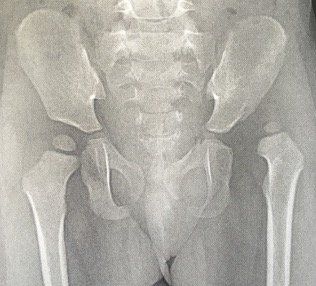Hip Dysplasia
What is Hip Dysplasia?
Hip Dysplasia, also known as developmental dislocation of the hip (DDH) or congenital dislocation of the hip (CDH), encompasses a spectrum of disorders from a shallower socket of the hip joint than is required for the ball to develop in normally to a full dislocation of the hip that the child is born with. If left untreated, the condition can lead to hip arthritis at a young age with associated pain, limping and stiffness symptoms.
What are the symptoms of Hip Dysplasia?
In babies and children with the dislocated hip form of hip dysplasia, there is decreased hip movement (abduction or opening of the legs) and a leg length discrepancy (the leg with the dislocated hip is shorter). In babies and children with mild hip dysplasia, there may be an asymmetry in range of motion or a sensation of clicking in the hip, however often there are no clinical symptoms and the diagnosis is made on ultrasound or x-ray examination of children with known risk factors or previously diagnosed hip dysplasia. In adolescents with hip dysplasia, they may begin to experience symptoms of hip or groin pain after physical exertion, and in some cases develop labral tears as a result of the hip dysplasia.
Treatment of Hip Dysplasia
The majority of babies with hip dysplasia can be successfully treated without surgery. Use of a splint (Pavlik Harness) will keep the hips in the best position to develop and can cure hip dysplasia in most cases. In children where a splint is unsuccessful or not a suitable option, a reduction of the hip under anaesthesia and application of a cast (hip spica) may be required. In cases where the hip remains irreducible or with persistent dysplasia of a reduced hip, surgery is indicated. Broadly speaking, surgery can involve one or a combination of:
- Soft tissue releases and an open hip reduction
- Pelvic osteotomy (Realigning the socket)
- Femoral osteotomy (Realigning the ball)
There are a wide variety of surgical options that are available, and the treatment plan for your child will be individualised to the circumstances. Your surgeon will discuss their recommendation for your child's treatment at the time of your consultation.




